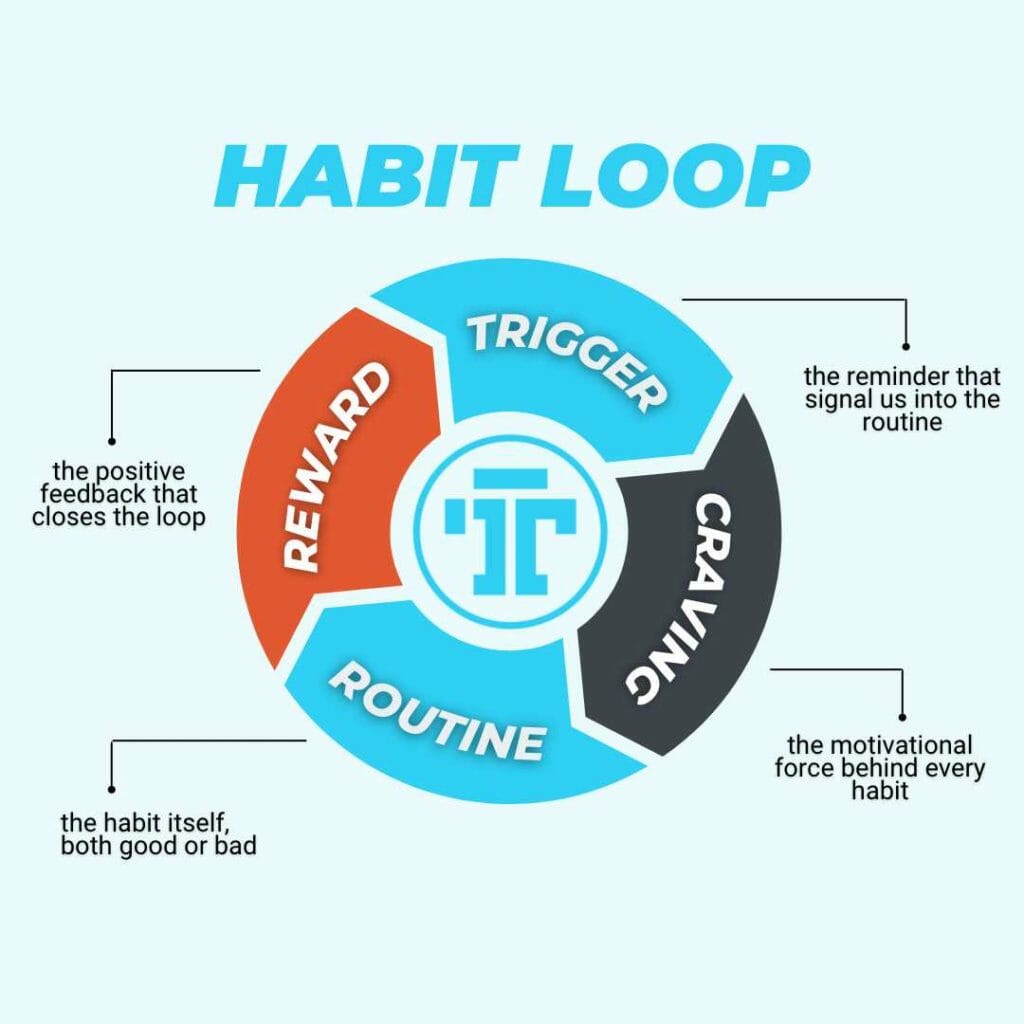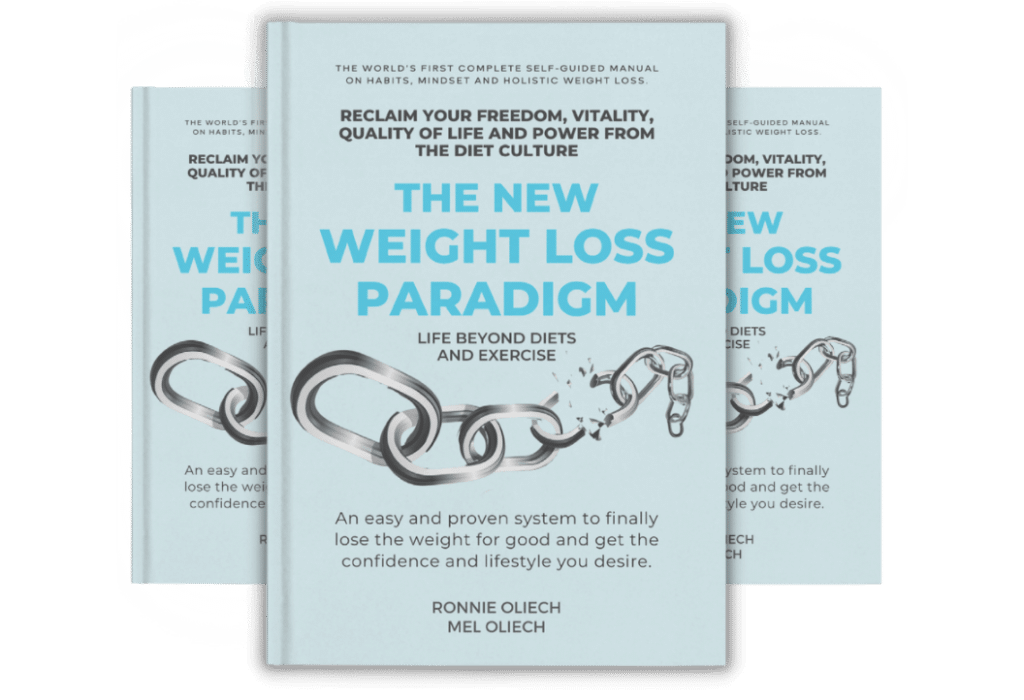We all have them — bad habits that we can’t seem to get rid of.
No matter how hard you try, you can’t seem to break the bad habits you have.
What’s even more frustrating, is that you know your bad habits are preventing you from achieving the things you want the most.
But how do you break a bad habit?
Habits are designed to help us
Habits are developed over time as a way for our brains to save energy.
For example, when you first learn to drive a car and back it out of the driveway, it’s very difficult. You have to put all of your focus into learning how to do something new and complex. But over time, you become more efficient at it — your brain ‘chunks’ information for you — so eventually you can do this complex action without even thinking about it. It becomes a habit.
If you had to ‘learn’ how to do this every day, along with all the other things you do each day, life would be very difficult and exhausting. So in order to make life easier for us, our brain develops habits. Whether they are ‘good’ habits or ‘bad’ habits is irrelevant to our brain. It only cares about saving effort on a daily basis.
It makes sense to keep the good habits, but what about the bad ones? How do you break them?
How habits work
The first step to getting rid of a habit that no longer serves you is to understand how habits work.
We like to call it the habit loop and it’s a 3-step process.
Every habit we have starts with a cue or trigger.
Once we experience the trigger, we go on automatic pilot and begin engaging in a behavior or thought process. This is called the routine.
Our routine provides us with a reward. And it’s this reward that keeps us engaging in that habit over and over again. As long as there is a reward for us, we’ll continue to do this habit even if it’s destructive.

The thing about habits is that you can’t break them. Habits never disappear. They’re always entrenched into the deep part of your brain, which means they’ll keep popping up over and over again.
You may not be able to break or get rid of a habit, but you can replace it.
And the secret is to change the routine.
Change the routine
Now you understand how habits work, it’s much easier to understand how to change a habit — or how to stop engaging in one habit and start engaging in a different one.
It’s not easy and it will take time, but you can do it if you understand what triggers your habit.
Let’s take a look at a couple of examples below.
Example #1
Sue has had a very stressful day in the office. A fundraising lunch she was in charge of didn’t go to plan. The caterers turned up late and didn’t have enough food. She received several complaints from the guests. Just as she was leaving work for the day, her boss asked to see her and he ended up yelling at her about the lunch. As a result, Sue was late getting home.
When she did, she was greeted by her two teenage children complaining because their dinner was late. Sue felt frustrated and annoyed that neither of them had made an effort to start dinner, and had left her kitchen in a mess after making their after-school snacks. Sue quickly cooked dinner, only to have her teenagers complain about their meal before heading off to their bedrooms, leaving her to clean up. By the time Sue finished cleaning the kitchen, she was feeling angry, frustrated and stressed.
Sue has been watching what she’s eating lately because she’s trying to lose weight. However, tonight she decided she would ease some of the stress by grabbing the block of chocolate from the cupboard and a bottle of wine. She sat on the couch and watched Netflix for the next few hours. Drinking the wine helped her unwind, while the chocolate made her feel happy. She justified her actions by telling herself she needed to chill out. By the time Sue went to bed, it was after midnight, but she didn’t feel stressed anymore.
Example #2
Sue has had a very stressful day in the office. A fundraising lunch she was in charge of didn’t go to plan. The caterers turned up late and didn’t have enough food. She received several complaints from the guests. Just as she was leaving work for the day, her boss asked to see her and he ended up yelling at her about the lunch. As a result, Sue was late getting home.
When she did, she was greeted by her two teenage children complaining because their dinner was late. Sue felt frustrated and annoyed that neither of them had made an effort to start dinner, and had left her kitchen in a mess after making their after-school snacks. Sue quickly cooked dinner, only to have her teenagers complain about their meal before heading off to their bedrooms, leaving her to clean up. By the time Sue finished cleaning the kitchen, she was feeling angry, frustrated and stressed.
Sue has been watching what she’s eating lately because she’s trying to lose weight. She realised she needed to ease the stress she was feeling but understood that eating and drinking was not the best option. So she ran a hot bath and added her favourite bath salts. Afterwards, she made herself some herbal tea, added a few drops of her lavender essential oils to her diffuser, curled up in her favourite pyjamas and read a book. It wasn’t long until she began to feel sleepy, so she decided to head off to bed. Sue felt quite relaxed as she got into bed and drifted off to sleep easily.
Same trigger, different routine
In the above examples, it’s easy to see what triggered Sue — a stressful day at work, compounded by a stressful evening with the kids.
In the first example Sue reaches for chocolate and alcohol — two things she’s probably relied on for some time to help her ease stress and anxiety. The reward (not feeling stressed anymore) is what keeps her making this choice, even though she’s been watching what she’s eating because she wants to lose weight.
In the second example, we see Sue who understands her usual habit of dealing with stress is to eat and drink alcohol. However, she consciously chooses a different set of behaviours (routine) instead. The reward is still the same — feeling relaxed — but she’s a step closer to her weight loss goal because she didn’t engage in the bad habit of reaching for chocolate and wine.
What are your bad habits?
Can you see how habits work? And how you can change them?
It comes down to understanding what bad habits no longer serve you, what triggers you to engage in these habits, and then deciding upon a different routine that will get you the same reward but help get you closer to your goals.
Changing habits can take time, but it’s worth putting in the effort. Like all the habits you’ve developed over your life, once you’ve repeated your new routine enough times, it will become a new habit — and will end up replacing the bad habit you once had.
Need help changing your bad habits?
At Imani Tribe we understand that habits are really at the root of why all of us do what we do.
That’s why we have a strong focus on helping our clients change their habits — those self-sabotaging, bad habits that have prevented them from having the body they crave — to habits that will help them get results.
We help you change one habit at a time by giving you strategies and an action plan. We never overwhelm you, and we give you the time and support you need for you to build healthier habits.
If you need help changing your habits, please reach out to us because we’d love to help.


















